Can You Imagine A Costa Rica Without All Those 0’S In Its Money?
The new to Costa Rica are often bewildered by all those zeros following the numbers 1 to 9 to in the local currency. Even after living in Costa Rica for almost two decades, I am still awed by figures in the tens, even hundreds of millions of Colones only to learn, on conversion, that it’s only a handful of dollars. And then there is the billion thing that in Spanish is known as thousand million (mil million in Spanish). That’s a lot of zeros.
So, I found it interesting the article by Ittay Weiss about the invention of the zero and how it helped create modern mathematics. It’s difficult to imagine living in Costa Rica without all those zeros. Yet for thousands of years, the world did without it.
From Christianity’s banish of the use of the zero for being satanic, to Buddhism’s concept of nothingness is devoid of any demonic possessions, to the Italian mathematician Fibonacci, who brought the decimal system to Europe, the story is a must-read.
Nothing Matters: How The Invention Of Zero Helped Create Modern Mathematics
A small dot on an old piece of birch bark marks one of the biggest events in the history of mathematics. The bark is actually part of an ancient Indian mathematical document known as the Bakhshali manuscript. And the dot is the first known recorded use of the number zero. What’s more, researchers from the University of Oxford recently discovered the document is 500 years older than was previously estimated, dating to the third or fourth century – a breakthrough discovery.
Today, it’s difficult to imagine how you could have mathematics without zero. In a positional number system, such as the decimal system we use now, the location of a digit is really important. Indeed, the real difference between 100 and 1,000,000 is where the digit 1 is located, with the symbol 0 serving as a punctuation mark.
Yet for thousands of years we did without it. The Sumerians of 5,000BC employed a positional system but without a 0. In some rudimentary form, a symbol or a space was used to distinguish between, for example, 204 and 20000004. But that symbol was never used at the end of a number, so the difference between 5 and 500 had to be determined by context.
What’s more, 0 at the end of a number makes multiplying and dividing by 10 easy, as it does with adding numbers like 9 and 1 together. The invention of zero immensely simplified computations, freeing mathematicians to develop vital mathematical disciplines such as algebra and calculus, and eventually the basis for computers.
Zero’s late arrival was partly a reflection of the negative views some cultures held for the concept of nothing. Western philosophy is plagued with grave misconceptions about nothingness and the mystical powers of language. The fifth century BC Greek thinker Parmenides proclaimed that nothing cannot exist, since to speak of something is to speak of something that exists. This Parmenidean approach kept prominent historical figures busy for a long while.
After the advent of Christianity, religious leaders in Europe argued that since God is in everything that exists, anything that represents nothing must be satanic. In an attempt to save humanity from the devil, they promptly banished zero from existence, though merchants continued secretly to use it.
By contrast, in Buddhism the concept of nothingness is not only devoid of any demonic possessions but is actually a central idea worthy of much study en route to nirvana. With such a mindset, having a mathematical representation for nothing was, well, nothing to fret over. In fact, the English word “zero” is originally derived from the Hindi “sunyata”, which means nothingness and is a central concept in Buddhism.

Bodleian Libraries
So after zero finally emerged in ancient India, it took almost 1,000 years to set root in Europe, much longer than in China or the Middle East. In 1200 AD, the Italian mathematician Fibonacci, who brought the decimal system to Europe, wrote that:
THE METHOD OF THE INDIANS SURPASSES ANY KNOWN METHOD TO COMPUTE. IT’S A MARVELLOUS METHOD. THEY DO THEIR COMPUTATIONS USING NINE FIGURES AND THE SYMBOL ZERO.
This superior method of computation, clearly reminiscent of our modern one, freed mathematicians from tediously simple calculations, and enabled them to tackle more complicated problems and study the general properties of numbers. For example, it led to the work of the seventh century Indian mathematician and astronomer Brahmagupta, considered to be the beginning of modern algebra.
Algorithms And Calculus
The Indian method is so powerful because it means you can draw up simple rules for doing calculations. Just imagine trying to explain long addition without a symbol for zero. There would be too many exceptions to any rule. The ninth century Persian mathematician Al-Khwarizmi was the first to meticulously note and exploit these arithmetic instructions, which would eventually make the abacus obsolete.
Such mechanical sets of instructions illustrated that portions of mathematics could be automated. And this would eventually lead to the development of modern computers. In fact, the word “algorithm” to describe a set of simple instructions is derived from the name “Al-Khwarizmi”.
The invention of zero also created a new, more accurate way to describe fractions. Adding zeros at the end of a number increases its magnitude, with the help of a decimal point, adding zeros at the beginning decreases its magnitude. Placing infinitely many digits to the right of the decimal point corresponds to infinite precision. That kind of precision was exactly what 17th century thinkers Isaac Newton and Gottfried Leibniz needed to develop calculus, the study of continuous change.
This article was originally published on The Conversation, and is republished here with permission. Read the original article.http://qcostarica.com/can-you-imagine-a-costa-rica-without-all-those-0s-in-its-money/
とても興味深く読みました:
\documentclass[12pt]{article}
\usepackage{latexsym,amsmath,amssymb,amsfonts,amstext,amsthm}
\numberwithin{equation}{section}
\begin{document}
\title{\bf Announcement 380: What is the zero?\\
(2017.8.21)}
\author{{\it Institute of Reproducing Kernels}\\
Kawauchi-cho, 5-1648-16,\\
Kiryu 376-0041, Japan\\
}
\date{\today}
\maketitle
\section{What is the zero?}
The zero $0$ as the complex number or real number is given clearly by the axions by the complex number field and real number field.
For this fundamental idea, we should consider the {\bf Yamada field} containing the division by zero. The Yamada field and the division by zero calculus will arrange our mathematics, beautifully and completely; this will be our natural and complete mathematics.
\medskip
\section{ Double natures of the zero $z=0$}
The zero point $z=0$ represents the double natures; one is the origin at the starting point and another one is a representation of the point at infinity. One typical and simple example is given by $e^0 = 1,0$, two values. {\bf God loves two}.
\section{Standard value}
\medskip
The zero is a center and stand point (or bases, a standard value) of the coordinates - here we will consider our situation on the complex or real 2 dimensional spaces. By stereographic
projection mapping or the Yamada field, the point at infinity $1/0$ is represented by zero. The origin of the coordinates and the point at infinity correspond each other.
As the standard value, for the point $\omega_n = \exp \left(\frac{\pi}{n}i\right)$ on the unit circle $|z|=1$ on the complex $z$-plane is, for $n = 0$:
\begin{equation}
\omega_0 = \exp \left(\frac{\pi}{0}i\right)=1, \quad \frac{\pi}{0} =0.
\end{equation}
For the mean value
$$
M_n = \frac{x_1 + x_2 +... + x_n}{n},
$$
we have
$$
M_0 = 0 = \frac{0}{0}.
$$
\medskip
\section{ Fruitful world}
\medskip
For example, for very and very general partial differential equations, if the coefficients or terms are zero, then we have some simple differential equations and the extreme case is all the terms are zero; that is, we have trivial equations $0=0$; then its solution is zero. When we consider the converse, we see that the zero world is a fruitful one and it means some vanishing world. Recall Yamane phenomena (\cite{kmsy}), the vanishing result is very simple zero, however, it is the result from some fruitful world. Sometimes, zero means void or nothing world, however, it will show {\bf some changes} as in the Yamane phenomena.
\section{From $0$ to $0$; $0$ means all and all are $0$}
\medskip
As we see from our life figure (\cite{osm}), a story starts from the zero and ends with the zero. This will mean that $0$ means all and all are $0$. The zero is a {\bf mother} or an {\bf origin} of all.
\medskip
\section{ Impossibility}
\medskip
As the solution of the simplest equation
\begin{equation}
ax =b
\end{equation}
we have $x=0$ for $a=0, b\ne 0$ as the standard value, or the Moore-Penrose generalized inverse. This will mean in a sense, the solution does not exist; to solve the equation (6.1) is impossible.
We saw for different parallel lines or different parallel planes, their common points are the origin. Certainly they have the common points of the point at infinity and the point at infinity is represented by zero. However, we can understand also that they have no solutions, no common points, because the point at infinity is an ideal point.
Of course. we can consider the equation (6.1) even the case $a=b=0$ and then we have the solution $x=0$ as we stated.
We will consider the simple differential equation
\begin{equation}
m\frac{d^2x}{dt^2} =0, m\frac{d^2y}{dt^2} =-mg
\end{equation}
with the initial conditions, at $t =0$
\begin{equation}
\frac{dx}{dt} = v_0 \cos \alpha , \frac{d^2x}{dt^2} = \frac{d^2y}{dt^2}=0.
\end{equation}
Then, the highest high $h$, arriving time $t$, the distance $d$ from the starting point at the origin to the point $y(2t) =0$ are given by
\begin{equation}
h = \frac{v_0 \sin^2 \alpha}{2g}, d= \frac{v_0\sin \alpha}{g}
\end{equation}
and
\begin{equation}
t= \frac{v_0 \sin \alpha}{g}.
\end{equation}
For the case $g=0$, we have $h=d =t=0$. We considered the case that they are the infinity; however, our mathematics means zero, which shows impossibility.
These phenomena were looked many cases on the universe; it seems that {\bf God does not like the infinity}.
\bibliographystyle{plain}
\begin{thebibliography}{10}
\bibitem{kmsy}
M. Kuroda, H. Michiwaki, S. Saitoh, and M. Yamane,
New meanings of the division by zero and interpretations on $100/0=0$ and on $0/0=0$,
Int. J. Appl. Math. {\bf 27} (2014), no 2, pp. 191-198, DOI: 10.12732/ijam.v27i2.9.
\bibitem{msy}
H. Michiwaki, S. Saitoh, and M.Yamada,
Reality of the division by zero $z/0=0$. IJAPM International J. of Applied Physics and Math. {\bf 6}(2015), 1--8. http://www.ijapm.org/show-63-504-1.html
\bibitem{ms}
T. Matsuura and S. Saitoh,
Matrices and division by zero $z/0=0$, Advances in Linear Algebra
\& Matrix Theory, 6 (2016), 51-58. http://dx.doi.org/10.4236/alamt.2016.62007 http://www.scirp.org/journal/alamt
\bibitem{mos}
H. Michiwaki, H. Okumura, and S. Saitoh,
Division by Zero $z/0 = 0$ in Euclidean Spaces.
International Journal of Mathematics and Computation Vol. 28(2017); Issue 1, 2017), 1-16.
\bibitem{osm}
H. Okumura, S. Saitoh and T. Matsuura, Relations of $0$ and $\infty$,
Journal of Technology and Social Science (JTSS), 1(2017), 70-77.
\bibitem{romig}
H. G. Romig, Discussions: Early History of Division by Zero,
American Mathematical Monthly, Vol. 31, No. 8. (Oct., 1924), pp. 387-389.
\bibitem{s}
S. Saitoh, Generalized inversions of Hadamard and tensor products for matrices, Advances in Linear Algebra \& Matrix Theory. {\bf 4} (2014), no. 2, 87--95. http://www.scirp.org/journal/ALAMT/
\bibitem{s16}
S. Saitoh, A reproducing kernel theory with some general applications,
Qian,T./Rodino,L.(eds.): Mathematical Analysis, Probability and Applications - Plenary Lectures: Isaac 2015, Macau, China, Springer Proceedings in Mathematics and Statistics, {\bf 177}(2016), 151-182 (Springer).
\bibitem{ttk}
S.-E. Takahasi, M. Tsukada and Y. Kobayashi, Classification of continuous fractional binary operations on the real and complex fields, Tokyo Journal of Mathematics, {\bf 38}(2015), no. 2, 369-380.
\bibitem{ann179}
Announcement 179 (2014.8.30): Division by zero is clear as z/0=0 and it is fundamental in mathematics.
\bibitem{ann185}
Announcement 185 (2014.10.22): The importance of the division by zero $z/0=0$.
\bibitem{ann237}
Announcement 237 (2015.6.18): A reality of the division by zero $z/0=0$ by geometrical optics.
\bibitem{ann246}
Announcement 246 (2015.9.17): An interpretation of the division by zero $1/0=0$ by the gradients of lines.
\bibitem{ann247}
Announcement 247 (2015.9.22): The gradient of y-axis is zero and $\tan (\pi/2) =0$ by the division by zero $1/0=0$.
\bibitem{ann250}
Announcement 250 (2015.10.20): What are numbers? - the Yamada field containing the division by zero $z/0=0$.
\bibitem{ann252}
Announcement 252 (2015.11.1): Circles and
curvature - an interpretation by Mr.
Hiroshi Michiwaki of the division by
zero $r/0 = 0$.
\bibitem{ann281}
Announcement 281 (2016.2.1): The importance of the division by zero $z/0=0$.
\bibitem{ann282}
Announcement 282 (2016.2.2): The Division by Zero $z/0=0$ on the Second Birthday.
\bibitem{ann293}
Announcement 293 (2016.3.27): Parallel lines on the Euclidean plane from the viewpoint of division by zero 1/0=0.
\bibitem{ann300}
Announcement 300 (2016.05.22): New challenges on the division by zero z/0=0.
\bibitem{ann326}
Announcement 326 (2016.10.17): The division by zero z/0=0 - its impact to human beings through education and research.
\bibitem{ann352}
Announcement 352(2017.2.2): On the third birthday of the division by zero z/0=0.
\bibitem{ann354}
Announcement 354(2017.2.8): What are $n = 2,1,0$ regular polygons inscribed in a disc? -- relations of $0$ and infinity.
\bibitem{362}
Announcement 362(2017.5.5): Discovery of the division by zero as
$0/0=1/0=z/0=0$.
\end{thebibliography}
\end{document}
The division by zero is uniquely and reasonably determined as 1/0=0/0=z/0=0 in the natural extensions of fractions. We have to change our basic ideas for our space and world
Division by Zero z/0 = 0 in Euclidean Spaces
Hiroshi Michiwaki, Hiroshi Okumura and Saburou Saitoh
International Journal of Mathematics and Computation Vol. 28(2017); Issue 1, 2017), 1
-16.
http://www.scirp.org/journal/alamt http://dx.doi.org/10.4236/alamt.2016.62007
http://www.ijapm.org/show-63-504-1.html
http://www.diogenes.bg/ijam/contents/2014-27-2/9/9.pdf
http://okmr.yamatoblog.net/division%20by%20zero/announcement%20326-%20the%20divi
http://okmr.yamatoblog.net/
Relations of 0 and infinity
Hiroshi Okumura, Saburou Saitoh and Tsutomu Matsuura:
http://www.e-jikei.org/…/Camera%20ready%20manuscript_JTSS_A…
https://sites.google.com/site/sandrapinelas/icddea-2017
2017.8.21.06:37



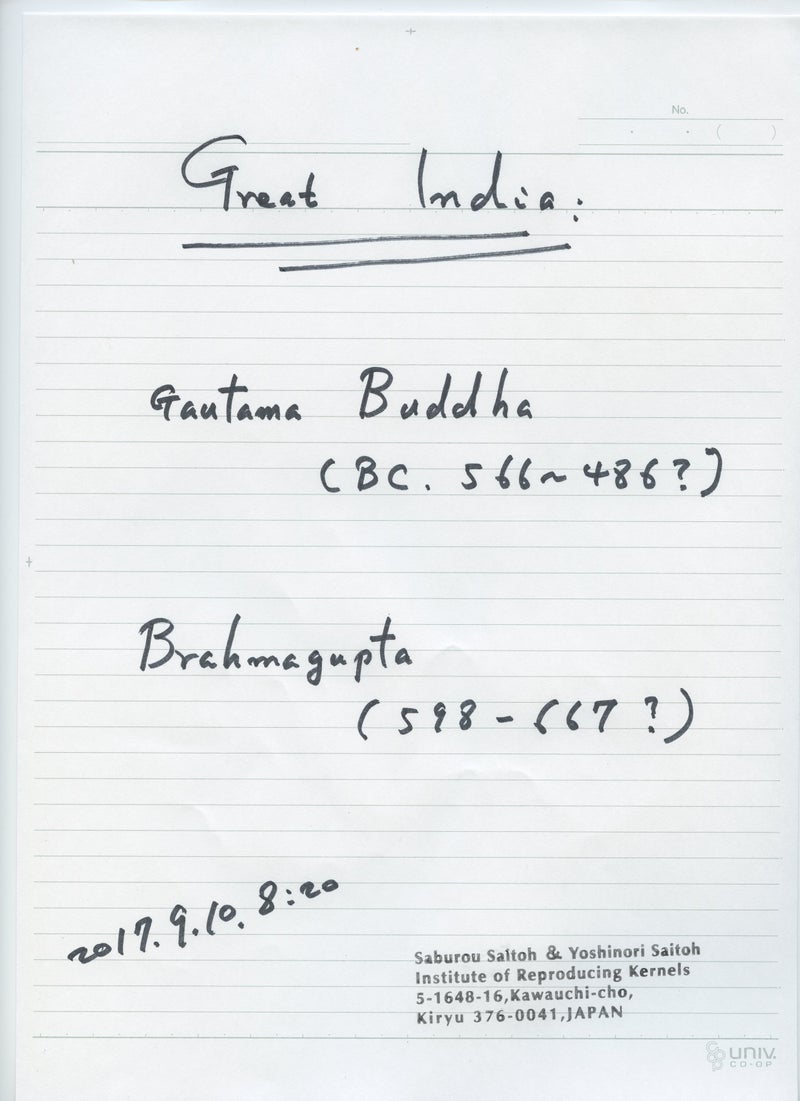
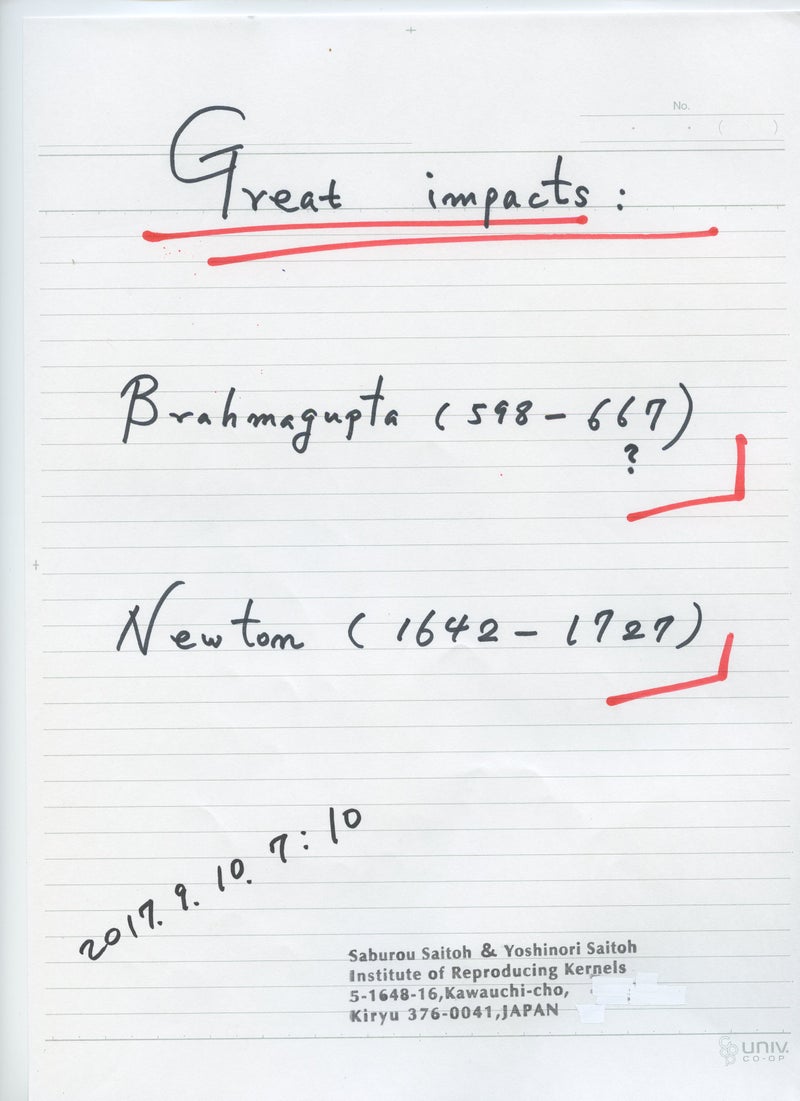

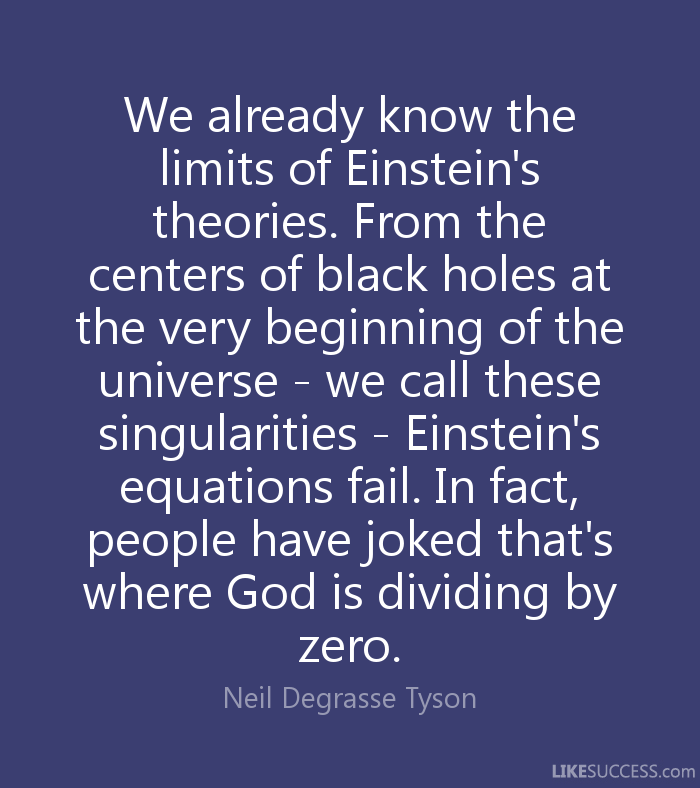






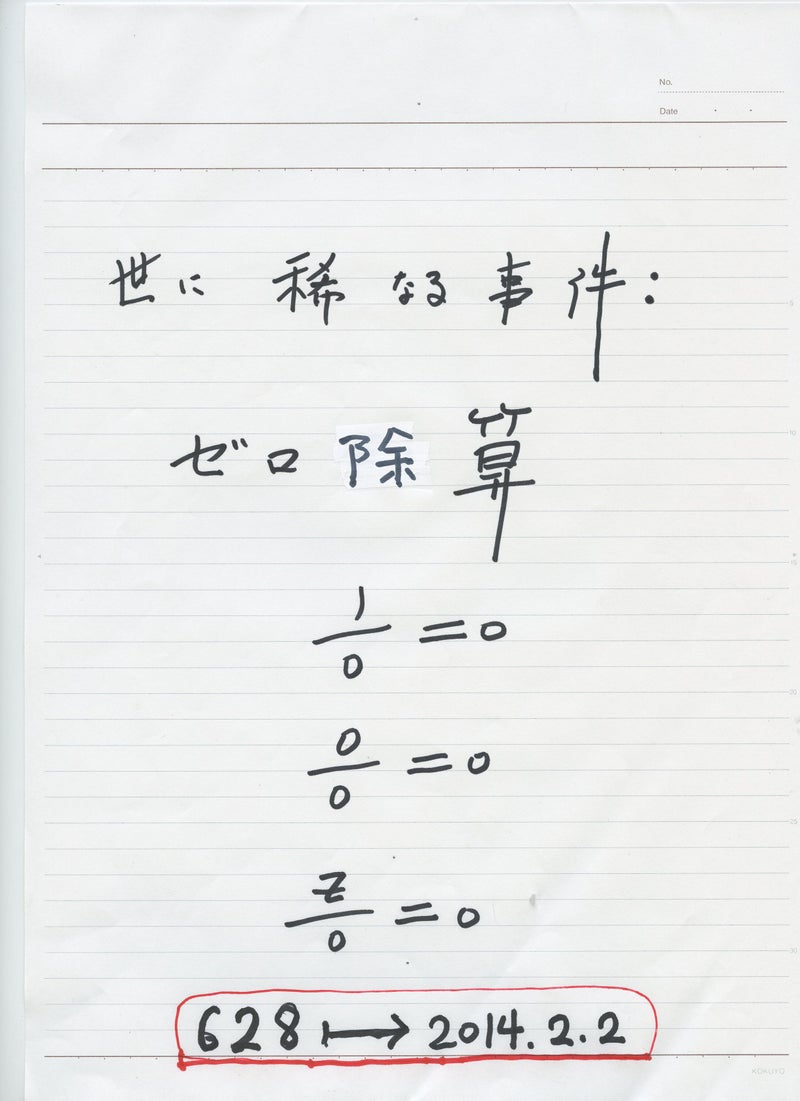












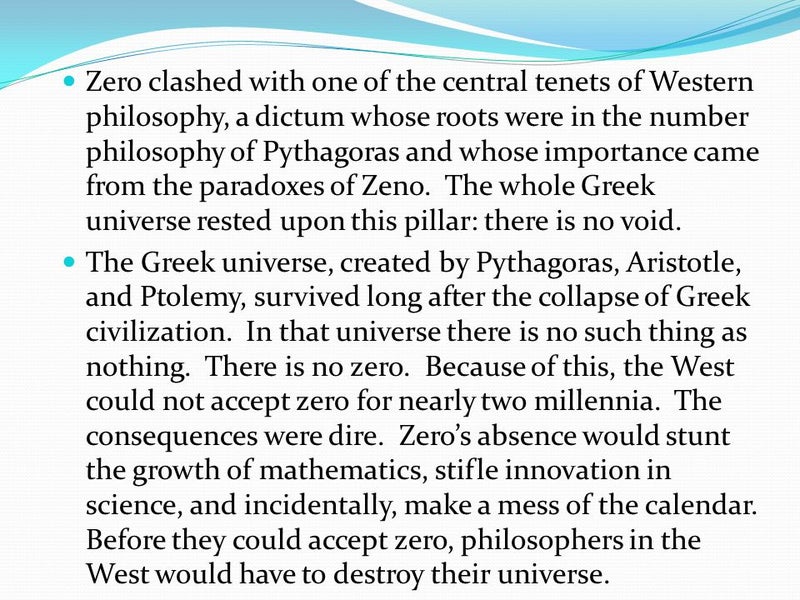


0 件のコメント:
コメントを投稿